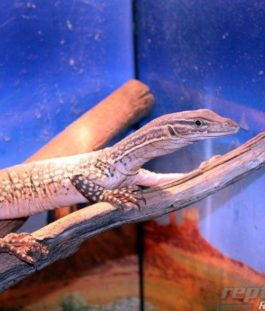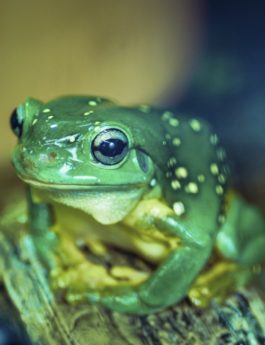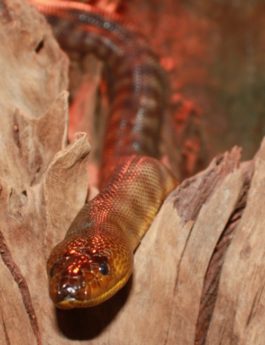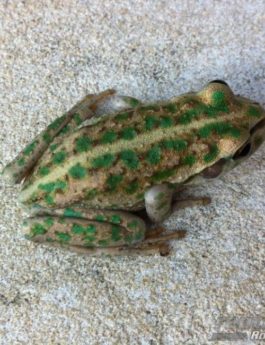Head and body pale yellowish-brown to pinkish-brown or fawn, with numerous small flecks of dark brown or creamy-white scattered over the head, body, limbs and tail; the darker flecks tend to be larger on the sides of the body and tail. A faint, dark temporal stripe often present, head scales are small and smooth. tail is nearly as long as the head and body, with moderately keeled scales. Belly is often white.
The Short-tailed Pygmy monitor is a ground-dwelling inhabitant of sandy desert areas, where they live in spinifex or litter, and have been found in burrows beneath spinifex. they can be found in the arid regions of northern WA and southern NT, to western QLD.
Terrarium: there are several terrariums of different sizes available, the required size will vary based on number of and age/size of the Short-Tailed Pygmy Monitor. Terrariums should be large enough to maintain a correct thermal gradient in ambient air temperatures, this means that the Monitor can regulate its body temperature throughout the enclosure. For a pair of mature Short-Tailed Pygmy Monitors, we wouldn’t recommend anything smaller than 90x45x60cm (WxDxH), as there needs to be enough room for them to chase their food and have their own basking spots.
Lighting & heating: Short-Tailed Pygmy Monitors are a ‘Day Active’ lizard, meaning they are Diurnal and therefore require high spectrum UVB lighting as well as an intense basking heat source. There are a number of ways to provide UVB, fluorescent 10.0 spectrum tubes or bulbs will provide UVB, a ‘daylight basking’ heat globe will have to be used in conjunction. A mercury vapour globe will provide intense UVA & UVB light, mercury vapour globes are in our opinion superior to fluorescents as it is a longer lasting globe with more intense UVB output, however they cannot be used with a thermostat so work better with a larger enclosure that will easier maintain a thermal gradient. During the day, you want to achieve a basking ‘Hot Spot’ of 38°C and an air temperature ranging from 35°C in the hot end, and down to 25°C in the cool end. A heat rock or heat tile should be provided as tummy heat to help with digestion, this can also be used as a night time heat source. To monitor the temperatures inside the enclosure a thermometer should always be used.
Furnishings: an elevated basking area can be provided using logs, vines or hammocks. Artificial foliage throughout the enclosure will allow the Short-Tailed Pygmy Monitor plenty of hiding spots and coverage, a water bowl placed in the cool end, and red sand kept at the correct moister is our recommended substrate.
Food in captivity: Short-Tailed Pygmy Monitors will eat a variety of insects, including crickets, roaches and silk worms. Small mice and raw mince should also be included into their diet in moderation. Food items will need to be dusted with calcium and vitamin supplements.
The essentials:
- Terrarium of appropriate size
- High spectrum UVB lighting
- Daytime Basking globe
- Thermometer
- Ground heat
- Water bowl
- Substrate
- Branches/Vines
- Foliage for shelter
- Calcium and vitamin supplements






